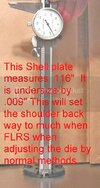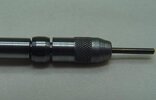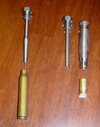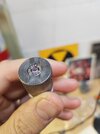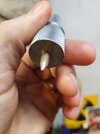Palladan44
Member
- Joined
- Nov 7, 2020
- Messages
- 1,904
Okie dokie.
Pulled out the decapping pin/expander only to find that it was unthreading about half way off......not good. Tightened it up.
And, read the RCBS manual that came with the die...... it states to set the decapping pin to .400" past the end of the die...... I clearly had it set deeper than that......i ran 5 cartridges, and they all cycle.
Thank you all for pointing me in the right direction here, and reminder to always read all the instructions and never assume based on prior assumptions/experience.
Pulled out the decapping pin/expander only to find that it was unthreading about half way off......not good. Tightened it up.
And, read the RCBS manual that came with the die...... it states to set the decapping pin to .400" past the end of the die...... I clearly had it set deeper than that......i ran 5 cartridges, and they all cycle.
Thank you all for pointing me in the right direction here, and reminder to always read all the instructions and never assume based on prior assumptions/experience.


